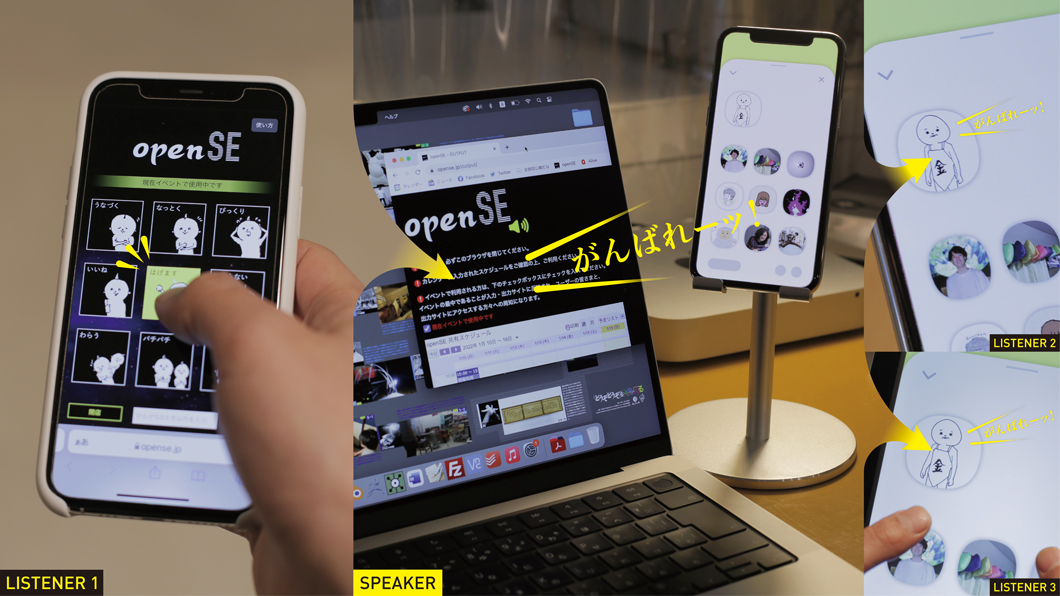openSE

With the advent of the Corona disaster, online communication such as video calling and voice SNS has become more active. In such a situation, communication in online classes and talk delivery is divided into a speaker and a listener, and the interaction between the two is mainly through text such as chat. This work was created to increase the amount of traffic that the listener can interfere with the speaker under these circumstances, and to realize communication that is neither 0 nor 100.
Specifically, I built a web application that allows listeners to send their reactions and arbitrary words, and share these sound sources output from the speaker’s side with everyone through microphones and mixers. By constructing the input and output in a web browser, there is no need to install any kind of application, which is a feature that enhances accessibility.
In fact, when the application was introduced to university lectures, various talk transmissions, online workshops, etc., the users felt as if they were creating the distribution space together. This is thought to be a sense of presence created by the rapid stimulation of voice, a medium that differs from visual information processing such as language and stamps. In addition, voice has a high degree of intervention in the space and the speaker is forced to react, which creates a sense of satisfaction in the listener and encourages further interaction. Such characteristics have led to a reversal of the initiative from the broadcaster to the listener in the introduction of radio broadcasting.
Unlike “assertions” using symbols, such as chat and stamps, “openSE” provides “reactions” using voice, creating a space of mutual influence. In other words, it is a framework that creates a “collaborative experience” in virtual spaces.
Created by
Yuta Sasaki
Award
25th Japan Media Art Festival Entertainment Division, Jury Selection
